- BY nwmcadmin
- POSTED IN Plastic Injection Molding, Plastic Injection Molds
- WITH 12 COMMENTS
- PERMALINK
- STANDARD POST TYPE
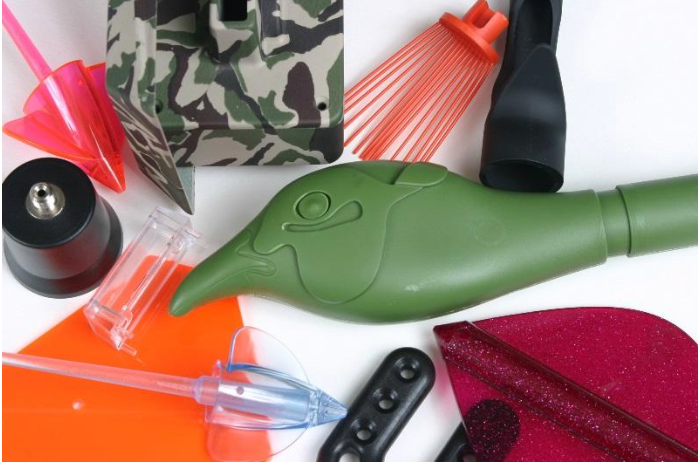
From toy LEGO blocks to space shuttle turbine blades, plastic injection molding touches our lives every day. But what is plastic injection molding? Why is it so popular? And is the process right for your manufacturing needs?
What is injection molding?
Injection molding is a common manufacturing process for producing large volumes of parts typically made out of metal, glass, rubber, or plastic. Injection molding is a little like making Jello. The process involves injecting molten material into a mold and letting it cool to a solid-state.
What is plastic injection molding?
Plastic injection molding is the process of producing plastic parts by injecting molten plastic into a metal mold.
The process began in 1872 when the American inventor John Wesley Hyatt patented the first plastic injection molding machine in an attempt to replace ivory billiard balls with plastic balls. While his product didn’t quite meet the needs of the market, his machine did. Since the machine’s inception, the plastic injection mold-making industry evolved quickly from initially producing small and simple plastic parts like buttons to manufacturing intricate medical equipment today.
Watch the plastic injection mold process:
What products are made from injection molding?
Manufacturers all over the world use injection molding to mass-produce all kinds of goods. You can use injection molding machines to make anything from a large object like a garbage can to a small object like a mobile phone case.
The most widespread use of plastic injection molding is to make non-consumer parts used in situations where visual appeal doesn’t matter—like mechanical parts—because the injection molding process often leaves impurities behind on the plastic part. Why? Let’s look at the process to find out.
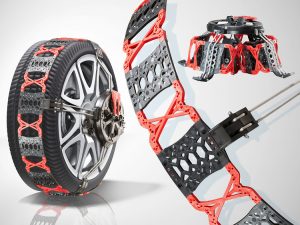
Tire chains made from plastic injection molding
What is the injection molding process?
In layman’s terms, injection molding boils down to four simple steps:
- Melt material
- Inject the molten material into a mold
- Let the molten material cool to a solid-state
- Remove the hardened material from the mold
But we can’t talk about the injection molding process without discussing the injection molding machine. A plastic injection molding machine consists of four main parts:
- Injection Unit
- Clamping Unit
- Control
- Base
How a plastic injection molding machine works
To begin the plastic injection molding process, plastic pellets are fed from a hopper into a barrel. The barrel contains an internal auger.
Simply put, an auger is a screw-shaped device that feeds material by rotating. Heater bands on the outside of the barrel heat the barrel and screw, melting the plastic into a molten state.
When the machine’s cycle is initiated, the mold closes, and the auger plunges forward under high pressure like a giant plunger in a syringe.
In less than a few seconds, the internal auger injects the molten plastic into the empty part of the mold called the cavity. To quickly cool the molten plastic, a coolant—usually water—flows in and around the mold through channels, much like an engine block. In typically less than 60 seconds, the plastic solidifies into the shape of the cavity.
After the plastic part solidifies, the mold opens, and the part is ejected. Once the plastic injection molding machine ejects the solidified plastic part, the process can begin again.
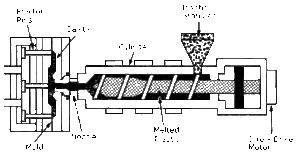
Diagram of the plastic injection molding process
What plastic is used for injection molding?
Plastic part manufacturers most commonly use are thermoplastics for injection molding. Thermoplastics are polymers that turn molten under high temperatures and solidify under cool temperatures. Unlike thermoset plastic material, which burns if it is reheated, you can heat and cool the thermoplastics multiple times before it degrades beyond use.
You’ll most often see thermoplastics in plastic pellet form for injection molding purposes. You can mix plastic pellets with colorants, recycled material, and even glitter or other specialty additives.
The most common types of thermoplastics are:
○ Acrylonitrile Butadiene Styrene (ABS)
- ABS is a rigid and lightweight material. It’s a very popular material to use for plastic injection molding. Did you know that LEGO bricks are made out of ABS?
○ Polycarbonates
- Polycarbonates are transparent thermoplastics. They are impact-resistant and can withstand high levels of plastic deformation without breaking or cracking. Manufacturers often use this type of thermoplastic for eyewear lenses, medical devices, and mobile devices. You can even use it to make bullet-proof glass!
○ Nylon
- Nylon has unique electrical properties and is tough. From sports equipment to industrial components, you’ll find this type of thermoplastic present in a wide range of applications.
○ Polypropylene
- Polypropylene is a flexible material. It also has good chemical resistance and does not leach into food products, making it an ideal choice if you want to manufacture food containers or eating utensils.
○ Polyethylene
- Polyethylene is one of the most versatile plastics to use for injection molding. Polytheylene’s high ductility, tensile strength, impact resistance, low moisture absorption, and recyclability make it an ideal material for plastic containers and bags.
Why is injection molding good?
Plastic manufacturing is one of the fastest-growing manufacturing industries in the United States. From 1980 to 2015, employment in plastic manufacturing, which includes employment in plastic injection molding, outpaced the entire manufacturing sector by 1.5% each year on average. There are many reasons why manufacturers in the US love plastic, especially plastic injection molding.
Mass production
Plastic injection molding is one of the fastest production processes in the world, lending itself well to mass production.
An injection molding cycle typically takes less than a minute and can sometimes only be a few seconds! Combine the quick cycle time with the fact that each cycle can produce multiple parts, and the output can be quite significant.
Low waste
Unlike CNC machining, which cuts away plastic from a large block or sheet, plastic injection molding produces very little waste material.
For CNC machining, you might start out with a 100g block of plastic but by the end of the manufacturing process, you could be left with a final product that only weighs a few grams. Plastic injection molding is more efficient. Out of 100g of original plastic material, only 20g becomes waste on average.
Complex parts
Products made using the plastic injection molding process can be intricate, which can cut down on the number of separate parts needed to make a single object, further shaving down overall production time. By adding features such as unscrewing fixtures and core pulls, you can create parts with threads or side holes, eliminating secondary operations required when using other manufacturing processes. You can even mold your design or company’s brand right onto the part during the manufacturing process.
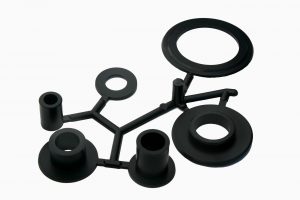
Plastic injection molding can yield thousands of complex plastic parts in one day
Low cost (in the long run)
Since plastic injection molding wastes less material than other types of plastic manufacturing like CNC machining, it is a less expensive process. Plus, plastic is cheaper than other materials like metal and rubber.
Recycling is another cost-saving feature of injection molding. You can recycle any leftover plastic that isn’t part of the final product by grinding it up. This by-product of the process is called “re-grind.” If you have enough regrind, it can be mixed with virgin material and used in the process. It can also be sold to a factory that manufactures plastic parts with low cosmetic requirements, making the overall process even more affordable.
Once you pay for the initial cost of the mold, the labor costs are low to operate it. Over time, the mold’s high production rate will pay for some, if not all of itself.
Consistent quality
Plastic injection molding is a highly repeatable process. With an injection molding machine, you can produce thousands of plastic parts in just one day, and they will all be of similar quality. Pending proper mold design, material selection, and product design, the rejection rate for injection molding can be lower than one percent.
If consistency is important for your brand or project, plastic injection molding is an ideal manufacturing method.
The disadvantages of injection molding
Although plastic injection molding has many advantages, the process has a few drawbacks, which are important to consider if you’re thinking of using the process to manufacture your next plastic part.
High upfront costs
Plastic injection molds are complex. Only experienced engineers know how to design and build them, meaning labor costs are high. Plus, there are many steps to building a mold that will produce millions of identical parts over time. A simple, single cavity mold can start at $2,000-$3,000. Whereas a high-production, multi-cavity mold made with hardened tool steel can cost $100,000 or more. See this injection mold price guide for more details.
To build one mold, there are four major phases.
1. Designing
Reputable mold makers use the latest CAD software. This program lets plastic mold engineers visualize, test, and change designs—all with a few clicks. Take the opportunity to try to lower the tooling costs in the design phases. Even the smallest details can have a dramatic impact. Remember, changing a design is easy and inexpensive, but changing a physical object may cost you dearly.
2. Prototyping
Unless your mold is super basic, prototyping the mold is the best practice. Otherwise, you might spend six figures on a mold that doesn’t meet your requirements! 3D printers work well in the prototyping phase because using them doesn’t cost too much. Depending on the part’s design, polymer casting, machining, or fabricating might be appropriate too.
3. Tooling
Tooling is the final step in the mold building process. During this step, engineers transform the design into a finished product. A good plastic injection mold manufacturer will have an in-house tool room with a wide range of tooling materials and machines available to them.
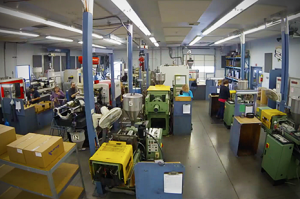
A full-service plastic injection molding outfit
4. Testing
Despite the best design, prototyping, and tooling efforts, never skip the testing phase. This is an opportunity to check important factors like the finished surface of the plastic part and how the runner separates from the part. Use the testing phase to make minor changes to your mold to ensure long-term performance.
Long lead times
A high-quality plastic injection mold will last for a lifetime. As a result, it requires a lot of planning and testing to get it right. Together, the designing, prototyping, testing, and tooling phases can take months. Plastic injection molding has a long lead time relative to other types of plastic manufacturing.
If you want a mold that can produce multiple plastic parts in one cycle, it could take even longer. For this type of mold, a mold manufacturer may even design, build, and test a single cavity tool before attempting to create the multi-cavity tool. Of course, the multi-cavity tool will have to repeat the designing, prototyping, building, and testing phases too.
However, once the planning and tooling phases are complete, a plastic injection mold can produce millions of parts in its lifetime. The sheer scale of plastic part production often outweighs the upfront costs and lost time.
Unforgiving materials
Unlike CNC machining, which generates a physical part from a computer design file and can be changed at any point by a software engineer, it’s difficult to make drastic alterations to a plastic mold after tooling because it is usually made out of steel.
You can change a plastic mold in two different ways. First, you can make the mold cavity larger by cutting away parts of the metal mold. This process adds plastic to the part. Removing plastic from the part can prove more challenging. In some cases, you can weld metal into the cavity, but that sometimes may not be possible, and a new cavity or an entirely new mold might be required. That could mean going back to the design phase.
Design limitations
Plastic injection molding relies on heating and cooling plastic. If a mold shape causes the plastic to cool in an inconsistent manner, your plastic part will be vulnerable to defects. You can limit this risk by making sure the mold walls are uniform in size, so your part solidifies evenly. Ideally, a plastic injection mold’s walls should be no thicker than 4 millimeters and no thinner than 0.5 millimeters. Keep in mind that the thicker the wall, the longer each cycle will take.
Size limitations
If you need to produce large single plastic parts, injection molding has its limitations. While there are injection molding machines large enough to produce boat hulls, the molding scenarios discussed in this article are for smaller parts, three pounds or less. If you are in need of a larger part, lead times and costs can increase exponentially.
You may be able to get around this limitation by using a number of injection molds to create multiple parts of a large product and assembling it as a secondary operation.
Case study: using a plastic injection mold to create a gutter cleaning tool
Recently, we had an entrepreneurial client come to us with an idea for a plastic part. He had jury-rigged an innovative gutter cleaner from parts he bought at a local hardware store. On his own, he produced about a dozen gutter cleaners. But he needed to scale his production to make the product commercially viable. He came to our team at Rex Plastics to find out whether plastic injection molding was right for his design.
After reviewing the hand-made prototype, we recommended that he use injection molding for the following reasons:
- The plastic part was smaller than 40g.
- The client needed to manufacture more than 1000 plastic parts per year.
- The plastic part’s wall thickness was uniform.
- The plastic part could be made from a thermoplastic material.
- The function of the plastic part was more important than its aesthetics.
- The client could wait several months before starting mass production.
We were able to design a mold for the gutter cleaner, build a prototype, tool the mold, and begin production in just a few months.
Today, the client purchases thousands per year, and order quantities for his gutter cleaner are climbing steadily.
Check out our other case studies to understand how this process can work for you:
- Creating interchangeable inserts
- Building a family mold
- Creating multiple length parts using inserts
- Building a tailgate remover engineered to support 300lbs
Watch how we helped Big Blok redesign their injection molded lids:
What do injection molding manufacturers do?
Injection molding manufacturers range in capabilities and services. Some companies only work with a pre-existing design while others offer support throughout the entire product development process.
As a full-service plastic injection molding manufacturer, Rex Plastics offers a complete range of mold making and producing capabilities. From consultation to product distribution, our clients benefit from our long list of in-house capabilities including:
- Part design
- Rapid prototyping
- Mold design
- Mold building
- Injection Molding Production
- Pad Printing
- Assembly
- Packaging & Hot stamping
- Light Distribution
Rex Plastics is a second-generation, family-owned, and operated full-service plastic injection molding contract manufacturer. We are based right here in the US in Vancouver, Washington, and work with large corporations and startups. Contact us today to find out if this process is right for your idea or company. You can also submit an online quote for your plastic injection mold.


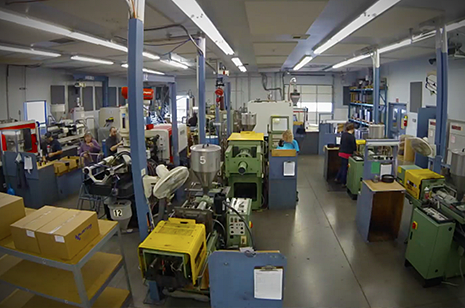
Thanks for this wonderful information on the topic. it really helpful to me. and so vast knowledge has given and while reading all the doubts are getting cleared point to point. do update more on it.
Thank you so much. It was very difficult for to undersrand this as i have a business project of this kind. On internet information is limited but here i found clearly what i wanted.
Thank you from South Africa
thanks for share, this is helpful
Great info. But how do you initially “protect” your idea from being stolen prior to production. Are there legal documents the plastic company should sign? Should a patent pending application first be requested before the idea and prototype is shared? I have a product.concept I want to pursue but reluctant about pursuing next steps due to concerns about protecting my idea.
Thank you so much. It was very difficult for to undersrand this as i have a business project of this kind.
welcome…
Injection molding process explained so effortlessly, it is so interesting and engaging article. Thanks for the knowledge sharing.
Great article! As someone new to the field, this guide was incredibly helpful in understanding the basics of plastic injection molding. If anyone is looking for a reliable plastic moulding company in Pune, I highly recommend doing thorough research to find a partner that meets all the key criteria mentioned here. It’s important to choose a company that offers high-quality materials and advanced technology.
This is a well-written and informative guide on plastic injection molding. How do you recommend choosing the right plastic material for different injection molding applications based on performance requirements?